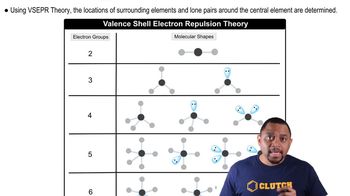Textbook Question
Use the chemical structure for Tagamet, a drug used to treat
peptic ulcers and heartburn, to answer questions 8 and 9.
Which orbitals overlap to form bond 2? (LO 8.5)
(a) C (sp) with C (sp) (b) C (sp) with C 1sp22
(c) C 1sp22 with C 1sp22 (d) C 1sp32 with C 1sp22
288
views




